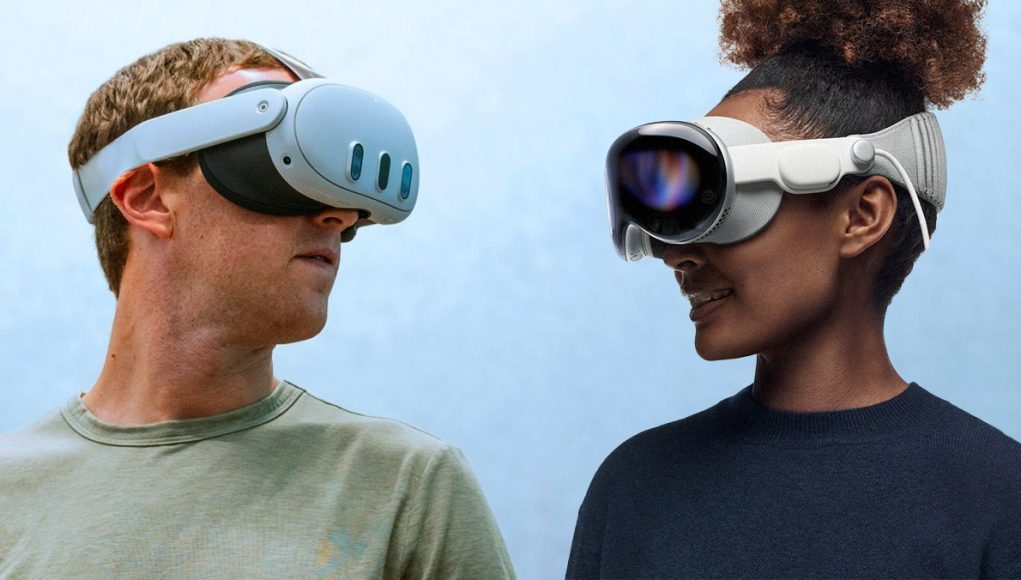Meta CEO Mark Zuckerberg got a chance to try out Apple Vision Pro, which although seven times more expensive than the company’s Quest 3 mixed reality headset, is arguably its biggest competitor right now—at least in terms of mental real estate it’s taking up. Here’s what the Meta chief himself thought about Apple’s first XR headset.
In a video released on Instagram, Zuckerberg explains his recent experience with the $3,500 Vision Pro. To him, it was already a forgone conclusion that $500 Quest 3 would be the better deal, but the Meta CEO goes on to explain why he thinks it’s simply a better product overall.
“I have to say that before [trying Vision Pro], I expected that Quest [3] would be the better value for most people, since it’s really good and it’s seven times less expensive. But after using it, I don’t just think Quest is the better value, I think Quest is the better product period.” Continuing, Zuckerberg calls Quest “better for the vast majority of things that people used mixed reality for.”
To illustrate, he reveals the video (embedded below) was captured using Quest 3’s passthrough cameras, which Zuckerberg compares to the high-resolution mixed reality passthrough and “big screens, just like Vision Pro.”

Zuckerberg highlights Quest’s strength when it comes to playing room-scale games, social VR applications, and fitness apps, but also mentions the headset’s overall comfort, which despite custom in-store fittings, has been a sticking point for some Vision Pro users.
“Quest [3], I think, is just a lot more comfortable. We designed it to weigh 120g less [than Quest Pro], which makes a really big difference on your face. There’s no wires that get in the way when you move around,” Zuckerberg says.
The Meta CEO also points to Quest 3’s wider field-of-view (FOV), brighter screen, and lower motion blur as he perceives it. While he mentions Vision Pro’s higher resolution displays, which he calls “nice,” he was surprised at “how many tradeoffs [Apple] had to make to the quality of the device, comfort, and ergonomics, and other aspects of the display and artifacts in order to get to that.”
More shots fired: Zuckerberg underlines the lack of motion controllers on Vision Pro and what he considers ‘less accurate’ hand-tracking than that on Quest 3. What’s more, he says Vision Pro’s eye-tracking is just “nice,” essentially comparing it to Quest Pro.
If it wasn’t clear by now, Zuckerberg isn’t exactly mincing words. Although Meta may not be in direct competition price-wise with Apple right now, he isn’t shy about drawing battle lines.
“Now, look. I know that some fanboys get upset whenever anyone dares to question if Apple is going to be the leader in a new category. But the reality is that every generation of computing has an ‘open’ and a ‘closed’ model. And yeah, in mobile, Apple’s closed model won. But it’s not always that way. If you go back to the PC era, Microsoft’s open model was the winner. And in this next generation, Meta is going to be the open model, and I really want to make sure the open model wins out again.”
You can catch the full three-minute video below, reupload courtesy ‘Matt – BMFVR’.
https://twitter.com/bmfshow/status/1757548885960999001







